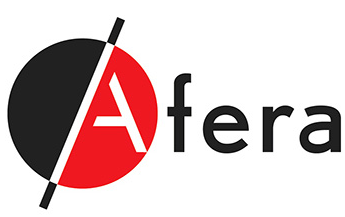
Tape manufacturer and supplier experts debate innovation approaches

“How do you see innovation practices evolving?” was the first question put by moderator Bert van Loon to the panel of tape company experts last month at Afera’s Athens Conference. A lively 45-minute debate followed among the 5 industry captains, who were willing to share a deeper layer of knowledge about their organisations with Afera’s audience.
The tape business needs an innovation “shot in the arm”
“Our industry is a very conservative one,” began Mike Ayres, who is chief executive of U.K.-based Advance Tapes International, Ltd. “That can sometimes be an advantage, because customers are unwilling to shift to another product so remain with you, but that can be a disadvantage in trying to win new customers.”
 In any case, the panel agreed that innovation is “a hot topic” and “a top priority” and that it is changing significantly in the current economic landscape. “The tape business needs a big shot in the arm to push it forward in terms of innovation,” Mr. Ayres continued. “Certainly if we are going to bridge that gap between the growth rates that we see are possible, and the rates at which our economies are growing, we will need more innovation in product.” He added that he was in favour of Afera’s proposal to introduce an annual sustainability award for company innovation.
In any case, the panel agreed that innovation is “a hot topic” and “a top priority” and that it is changing significantly in the current economic landscape. “The tape business needs a big shot in the arm to push it forward in terms of innovation,” Mr. Ayres continued. “Certainly if we are going to bridge that gap between the growth rates that we see are possible, and the rates at which our economies are growing, we will need more innovation in product.” He added that he was in favour of Afera’s proposal to introduce an annual sustainability award for company innovation.
“We also have the mindset that something needs to happen in the PSA arena,” said Lori Cherry, 3M EMEA area division manager for industrial adhesives and tapes. “Things are changing—the market is changing—and we can’t just assume that everybody is going to continue to use tapes.”
CEO and co-owner of Eurotape (NL) Hans van der Meer indicated that every tape-related company is “aiming for profitable growth”, of which innovation is a method for achieving that. “Realistically, we don’t solely do it for the good of society, because if it doesn’t add to our company’s success, we won’t do it.”
Where does a company’s innovation start?
According to the panel, it begins with the mindset of employees and cutting across silos. “It’s not only a part of the people working in R&D but in the DNA of everyone in the company,” commented Mr. Van der Meer. “I agree with Hans,” added Deniz Bölükbaşı, global business director of PSA and paper solutions at Organik Kimya (TR). “Innovation is not owned by a specific department in the company, but production, marketing, sales and every other department have to embrace it as a company culture.”
Mr. Bölükbaşı revealed that even their board meetings entail various department heads “sitting around the table” discussing the details of the “designing of the molecule”, including “what it really means for the customer” and the “company in terms of profitability”. Likewise, Mr. Ayres said that “one thing we are always trying to do is make sure we have got sufficient innovation DNA in the team”, i.e. personnel who are habitually inquisitive and challenge the status quo.
What can large and small tape companies learn from each other?
SAP Vice President of General Business Sales Programmes Stano Simunek described how he works with both big and small companies in moving toward innovation. He sees 3 fundamental areas in which they differ: The first is decision-making. In smaller companies, decision-making can be done much faster by the owner or responsible person. The second is the availability of people. Larger companies have more manpower ready to work on innovation projects and that can be reallocated if needed. The last is in allocation of finances, something which small companies can do on an ad hoc basis if innovation projects emerge.
Flexibility is the basic theme and what is needed to drive innovation in today’s marketplace. “Innovation is more flexible in small companies compared to big companies, but it’s also less structured,” Mr. Van der Meer pointed out. At Eurotape, they can start and stop projects quickly, but it’s the lack of vast internal resources, such as manpower, that make collaboration necessary.
 At 3M, “we do have the advantage of having resources separated out, but obviously with those in 200 countries, there is a very big challenge to make sure that they are all rowing the boat in the same direction,” Ms. Cherry revealed. “There are some cases where we can’t be fast, because from a matrix perspective, we have to go through multilayers of prioritisation.”
At 3M, “we do have the advantage of having resources separated out, but obviously with those in 200 countries, there is a very big challenge to make sure that they are all rowing the boat in the same direction,” Ms. Cherry revealed. “There are some cases where we can’t be fast, because from a matrix perspective, we have to go through multilayers of prioritisation.”
Collaborative/open innovation is a shared interest
“Collaborative innovation is certainly the way companies of our size of business have to go,” Mr. Ayres shared, as it creates more opportunities. “We cannot actually achieve all that is required to bring new products in our industry to market on our own.” But he says that perhaps another model is required “not just for companies of our [smaller] size but for new entrants to the market”.
Mr. Van Loon remarked that a proactive process plus a model for trust is what companies seem to be after. Increasing the quality and speed of interaction with end users about products—particularly new products—is key. “The hardest part on our side is bridging that information all the way to the end user,” emphasised Mr. Bölükbaşı. “That’s why we have to make sure that we know our customer’s customer.”
“From a larger company perspective, we do a good job of collaboration at least from an end-to-end process, involving our business teams cross-functionally and driving the collaboration mindset,” divulged Ms. Cherry. 3M is pursuing “open innovation with particular key account customers” but has not driven collaboration on innovation with other companies in the supply chain yet.
Arranging for IP rights is not necessarily an issue for larger companies like 3M, who possess the required resources, but it can be an obstacle for SMEs in development projects with suppliers and local universities, as Mr. Ayres mentioned. What Eurotape does to convince their customers to take part in open innovation is promise them cost savings in their businesses down the road. Similarly, Organic Kimya offers its customers the opportunity “to become more competitive in their business areas”.
What needs to be driven, said Mr. Simunek, is “to create alliances with the other players” who are “innovating in the same area”, even if they are competitors, so “a standard approach... will be the one that is accepted on the market, that will be leading”. In this sense, innovation is more structural and “not customer-specific”.
Non-product innovation opportunities
There are other elements in the complete business model – the brand values, added services, organisational structures, etc. – which can provide an excellent return on value where innovation is concerned. Mr. Simunek introduced the advantages of servitisation over product portfolios: Services are an added revenue stream to your business, your customers are bound to your business through service subscriptions, and the predictable revenue stream provided through servitisation is appreciated in financial markets.
3M sees the opportunity. “Especially as competition grows, the market gets smaller, and you have to look at other ways to bring value to the customer as well as generate productivity,” Ms. Cherry commented. But, she says, “It’s very difficult for us to change the mindset of a manufacturer and move into providing services.”
Similarly, Mr. Bölükbaşı admitted that servitisation is “a very innovative approach, but when it comes to metrics, it is very hard to weigh service against product innovation.” Although Ms. Cherry agreed that in terms of “business transformation or value realisation” servitisation is difficult to measure, she said that “you know you need to do it to continue to be relevant and grow.”
Mr. Ayres put a different spin on non-product innovation, suggesting that there isn’t one “silver bullet which is going to cure a problem on its own”, but that “marginal gains” in many different areas of a functioning business—i.e. many people “making small, incremental improvements”—“can add up to something pretty significant collectively.”
Download the complete slide presentation of the debate moderated by Bert van Loon (access code Athens2018)
Go to overview of articles on Athens Conference topics
Learn more about Afera membership

